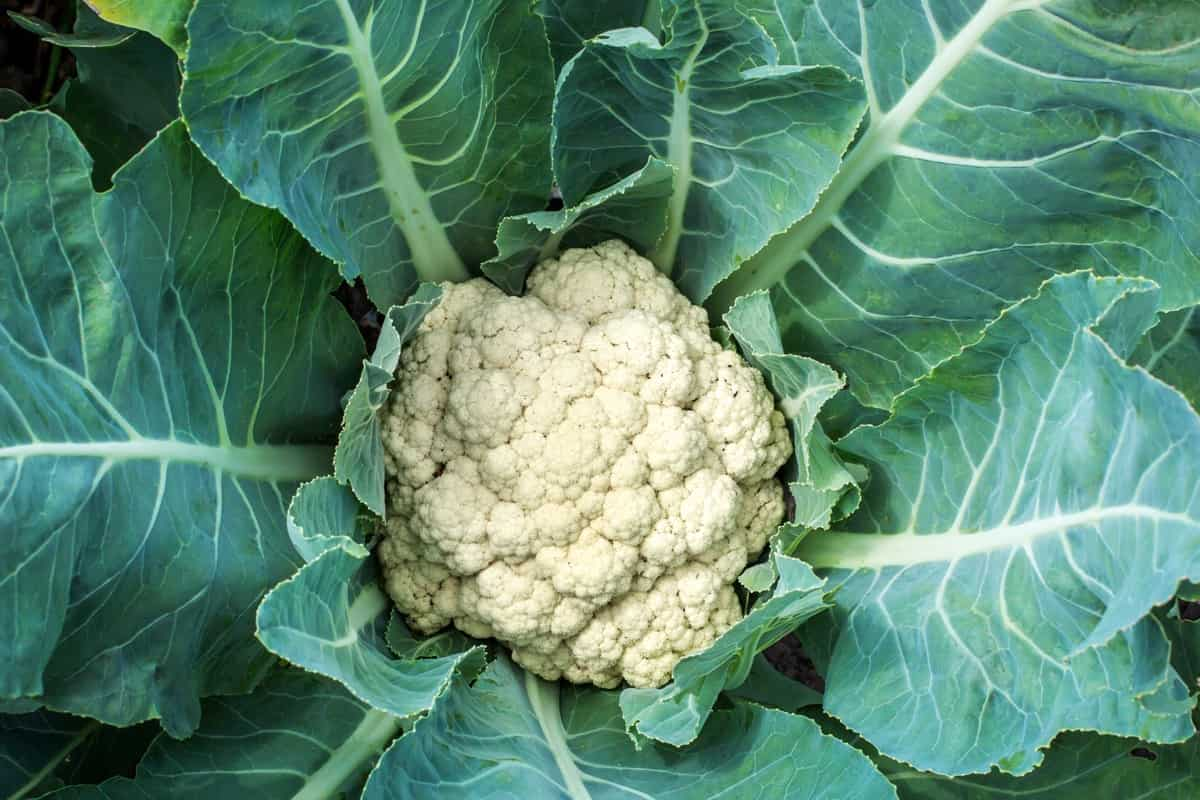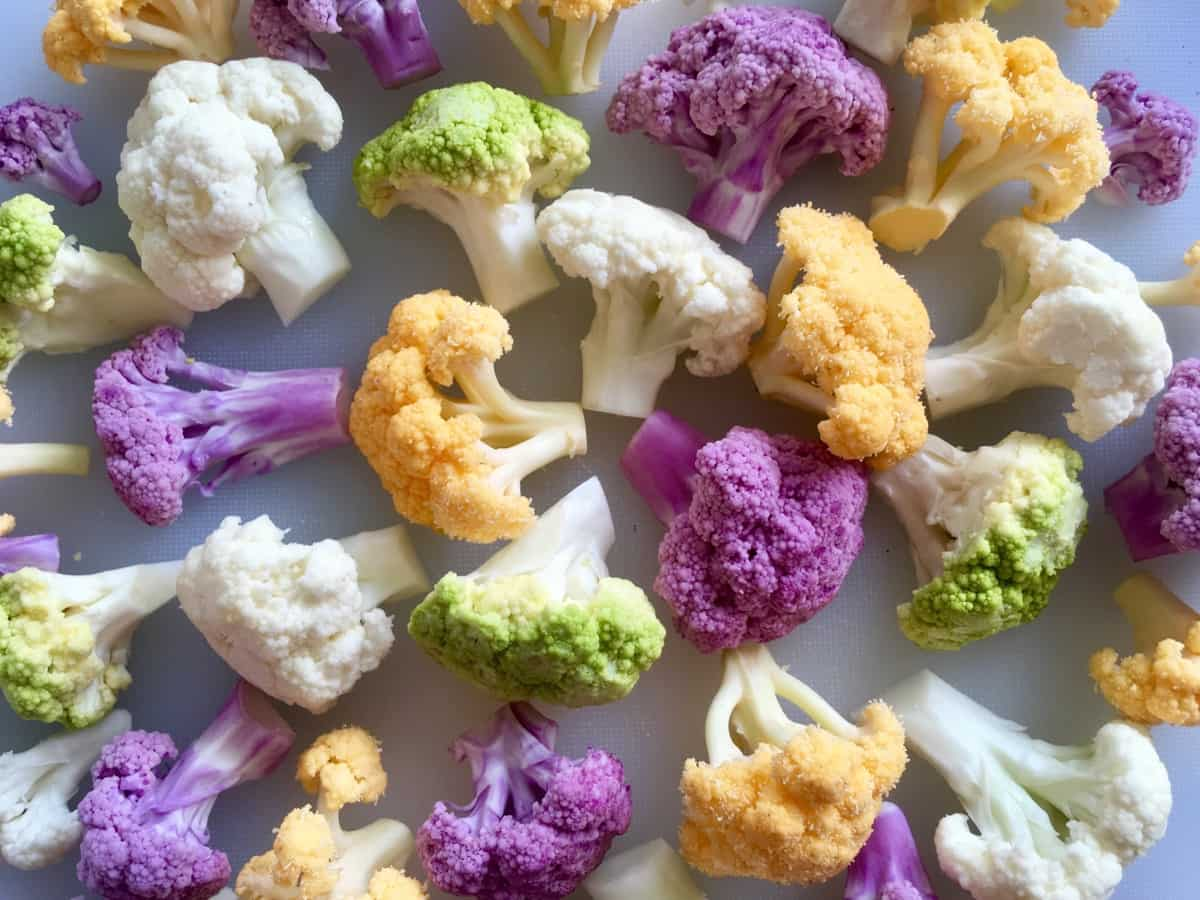Cauliflower, a member of the Brassica family, is a popular vegetable that can be grown in gardens. While it can be a rewarding experience to cultivate cauliflower plants, there are several common problems that gardeners may encounter. This document will explore these issues and provide some tips for overcoming them.

10 Common Problems With Garden-Grown Cauliflower Plants
Yellowing Leaves on Garden-grown Cauliflower Plants
Fusarium wilt is a fungal-caused disease that affects cauliflower plants. One of the most noticeable symptoms of this disease is the yellowing of the leaves. Fusarium wilt is caused by Fusarium oxysporum. The fungus enters through the roots and colonizes the vascular system, leading to wilting and yellowing of the leaves.
- Avoid planting cauliflower or other susceptible crops in the same area for consecutive years. Rotate with non-host crops to reduce the buildup of the pathogen in the soil.
- Remove and destroy any infected plant debris to prevent the spread of the fungus. Do not add infected plant material to a compost pile, as the fungus can survive in the compost.
- Consider planting cauliflower varieties resistant to Fusarium wilt. These varieties have been bred to withstand the disease and can help reduce its impact.
Small or Stunted Cauliflower Heads in Garden
One of the main reasons for small or stunted cauliflower heads is the lack of sunlight. In winter, the days are shorter, and the sun’s intensity is significantly reduced. Cauliflower plants require at least 6 hours of direct sunlight daily to thrive and develop fully. The plants struggle to photosynthesize and produce large, compact heads without adequate sunlight.
Providing additional protection to your cauliflower plants can also make a significant difference. Use row covers or cloches to shield the plants from cold temperatures and harsh winds. This will create a microclimate that is more favorable for growth.
Pests Infesting Cauliflower Plants in the Garden
One of the most common pests that affect cauliflower plants is the cauliflower worm, also known as the cabbage looper. They feed on the leaves and can quickly kill a plant if left unchecked. To protect your cauliflower plants from cauliflower worms, regularly inspect the leaves and remove any caterpillars by hand. Alternatively, you can use organic insecticides specifically designed to target these pests.
Cabbage root maggots are another pest that can wreak havoc on cauliflower plants. These small white larvae feed on the roots, leading to wilting and stunted growth. To protect your cauliflowers from cabbage root maggots, practice crop rotation, as these pests tend to overwinter in the soil. Floating row covers can also help prevent adult flies from laying eggs near your plants.
Wilting or Drooping Cauliflower Plants in the Garden
- Lack of Water: Insufficient watering can lead to wilting or drooping cauliflower plants. Ensure the plants receive adequate water, especially during dry periods or hot weather.
- Extreme Temperatures: Cauliflower plants are sensitive to temperature fluctuations. Exposure to extreme hot or cold can result in wilting or drooping. Provide shade during hot periods and protect plants from frost during colder months.
- Fusarium Wilt: This fungal disease affects the vascular system of cauliflower plants, leading to wilting and eventual death. Remove infected plants and avoid planting susceptible species in the same area.
Cauliflower Plants Not Forming Heads in the Garden
Typically, cauliflower plants should begin to form heads within 7 to 12 weeks after transplanting them into the garden. This timeframe varies based on various factors, such as the variety of cauliflower, growing conditions, and temperature. In addition to temperature, proper soil conditions are essential for successful head formation.
Cauliflower plants require well-drained soil that is rich in organic matter. They also benefit from a slightly acidic soil pH, ideally between 6.0 and 7.0. Adequate soil moisture is crucial, as both under-watering and over-watering can negatively affect head development.
Leaf-eating Caterpillars Damaging Garden-grown Cauliflower
Leaf-eating caterpillars can wreak havoc on garden-grown cauliflower. Common culprits include cabbage loopers, imported cabbage worms, and diamondback moth larvae. These pests can be identified by their greenish color, segmented bodies, and distinctive feeding patterns, typically leaving irregular holes and chewed edges on cauliflower leaves. Use physical barriers like floating row covers or netting to prevent leaf-eating caterpillars from reaching your cauliflower plants. These barriers should be installed early in the season and secured tightly to prevent pests from entering.
Fungal Diseases Affecting Cauliflower Plants in the Garden
Alternia Leaf Spot: Dark, circular spots with concentric rings appear on the leaves. As the disease spreads, the spots enlarge and may cause defoliation. Fungicides containing active ingredients such as chlorothalonil, mancozeb, or copper-based fungicides can help control Alternia leaf spots.
Black Rot: V-shaped, yellow lesions appear at the leaf edges, gradually extending towards the center, turning black. Infected plants may also exhibit wilting and stunted growth. Copper-based fungicides, such as Bordeaux mixture or copper hydroxide, effectively manage black rot.
Bacterial Leafspot: Water-soaked lesions with yellow halos appear on the leaves. These lesions may coalesce and cause leaf blighting and defoliation. Copper-based fungicides, such as those used for black rot, can also help control bacterial leaf spots. \
In case you missed it: Cauliflower Disease Resistant Varieties: Protecting Your Harvest with Smart Plant Selection

Cauliflower Plants Attracting Aphids in the Garden
These cruciferous vegetables can sometimes become vulnerable to aphid infestations. Aphids are soft-bodied small insects that feed on the sap of plants, causing damage to the leaves and inhibiting the growth of cauliflower plants.
Methods to Get Rid of Aphids in Cauliflowers
- Neem Oil: Neem oil disrupts aphids’ feeding and reproductive processes, effectively reducing their population.
- Insecticidal Soap: The soap coats the aphids, leading to their dehydration and eventual elimination.
Bolting or Premature Flowering in Garden-grown Cauliflower
Bolting of cauliflower due to temperature fluctuations. Prolonged exposure to temperatures above 24°C or sudden temperature drops can trigger bolting and early flowering. Environmental stressors such as drought, nutrient deficiencies, overcrowding, or physical damage can contribute to bolting and premature flowering in cauliflower. These stressors disrupt the plant’s hormonal balance and trigger reproductive growth.
By understanding the causes and implementing preventative measures such as optimal planting timing, proper spacing, soil preparation, temperature management, and irrigation management, gardeners can enhance the success of their cauliflower crop and mitigate the risk of bolting or premature flowering.
Cauliflower Plants Suffering From Nutrient Deficiencies in the Garden
Whiptail Deficiency: Whiptail is a nutrient deficiency characterized by the leaves of cauliflower plants appearing narrow and elongated, resembling a whip. Ensuring that the soil is adequately amended with calcium is essential to address whiptail. This can be done by adding lime or gypsum to the soil before planting cauliflower.
Molybdenum deficiency: Molybdenum deficiency is another common issue affecting cauliflower plants. It is characterized by yellowing leaves, particularly in the older foliage. In severe cases, the leaves may become distorted and appear scorched. Molybdenum is an essential micronutrient for cauliflower plants, and its deficiency can be addressed by applying a molybdenum-containing fertilizer or foliar spray.
In case you missed it: A Step-by-Step Guide for Growing Cauliflower Microgreens

Conclusion
Gardeners can increase the chances of cultivating healthy cauliflower plants by addressing poor growth, pests, diseases, environmental stress, and bolting. With proper care and attention, garden-grown cauliflower can provide a bountiful harvest of delicious and nutritious florets.
- Feed Your Flock for Less: Top 10 Tips to Save on Chicken Feed
- Ultimate Guide to Ossabaw Island Hog: Breeding, Raising, Diet, and Care
- Hatching Answers: The Top 10 Reasons Your Chickens Aren’t Laying Eggs
- Eggs and Economics: Breaking Down the Cost of Raising Backyard Chickens
- Defend Your Greens: Proven Methods to Keep Iguanas Out of Your Garden
- Ultimate Guide to Cinnamon Queen Chicken: A Comprehensive Guide for Beginners
- Ultimate Guide to California Tan Chicken: Breeding, Raising, Diet, Egg-Production and Care
- Ultimate Guide to Marsh Daisy Chicken: Breeding, Raising, Diet, and Care
- 10 Types of Chicken Farming Businesses You Can Start for Profits